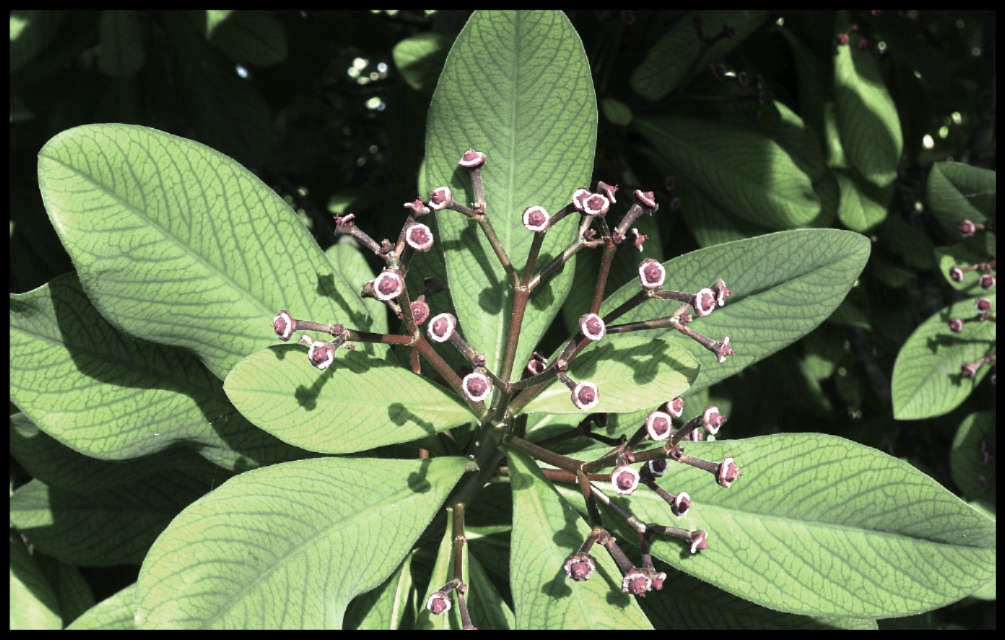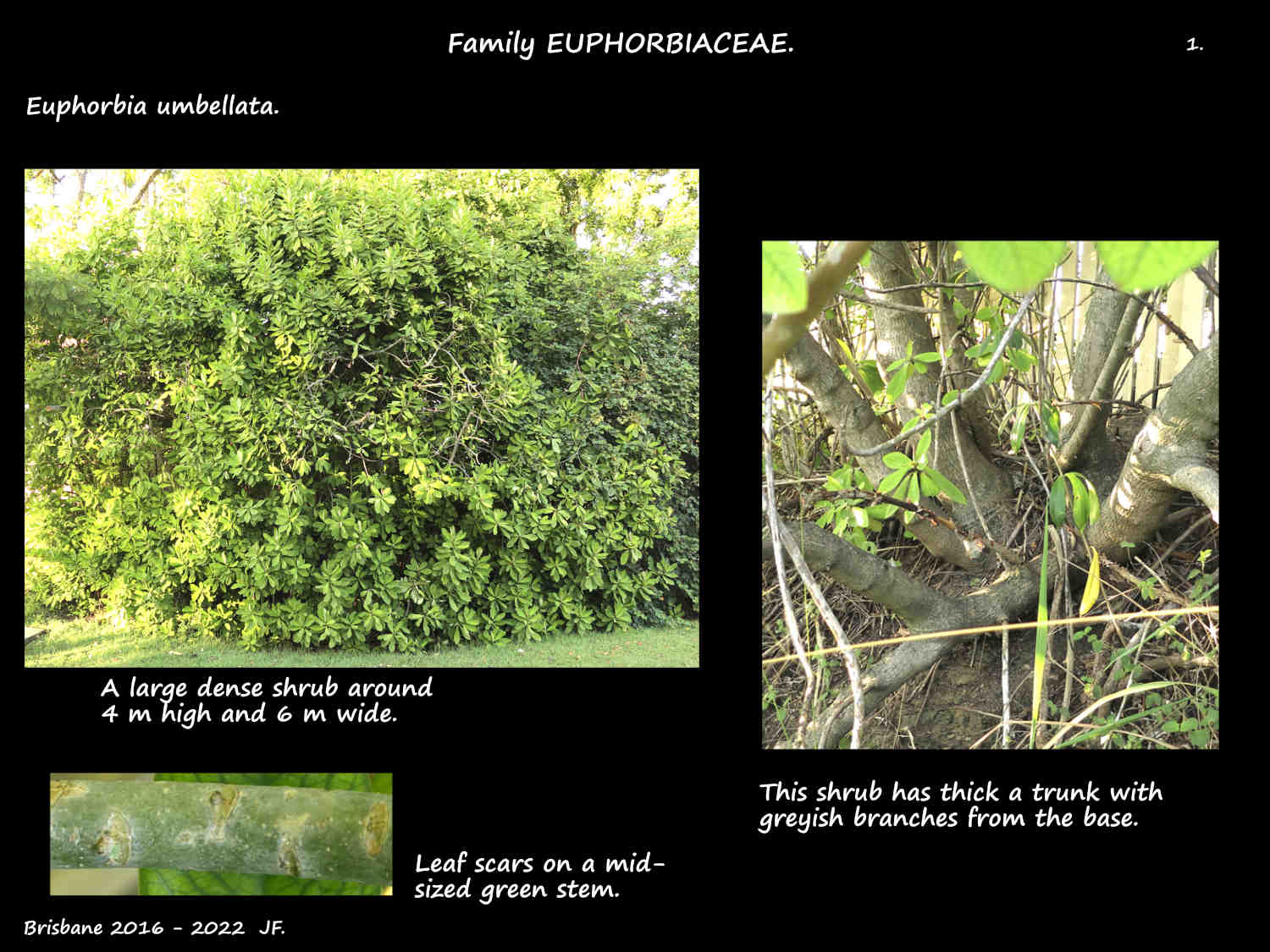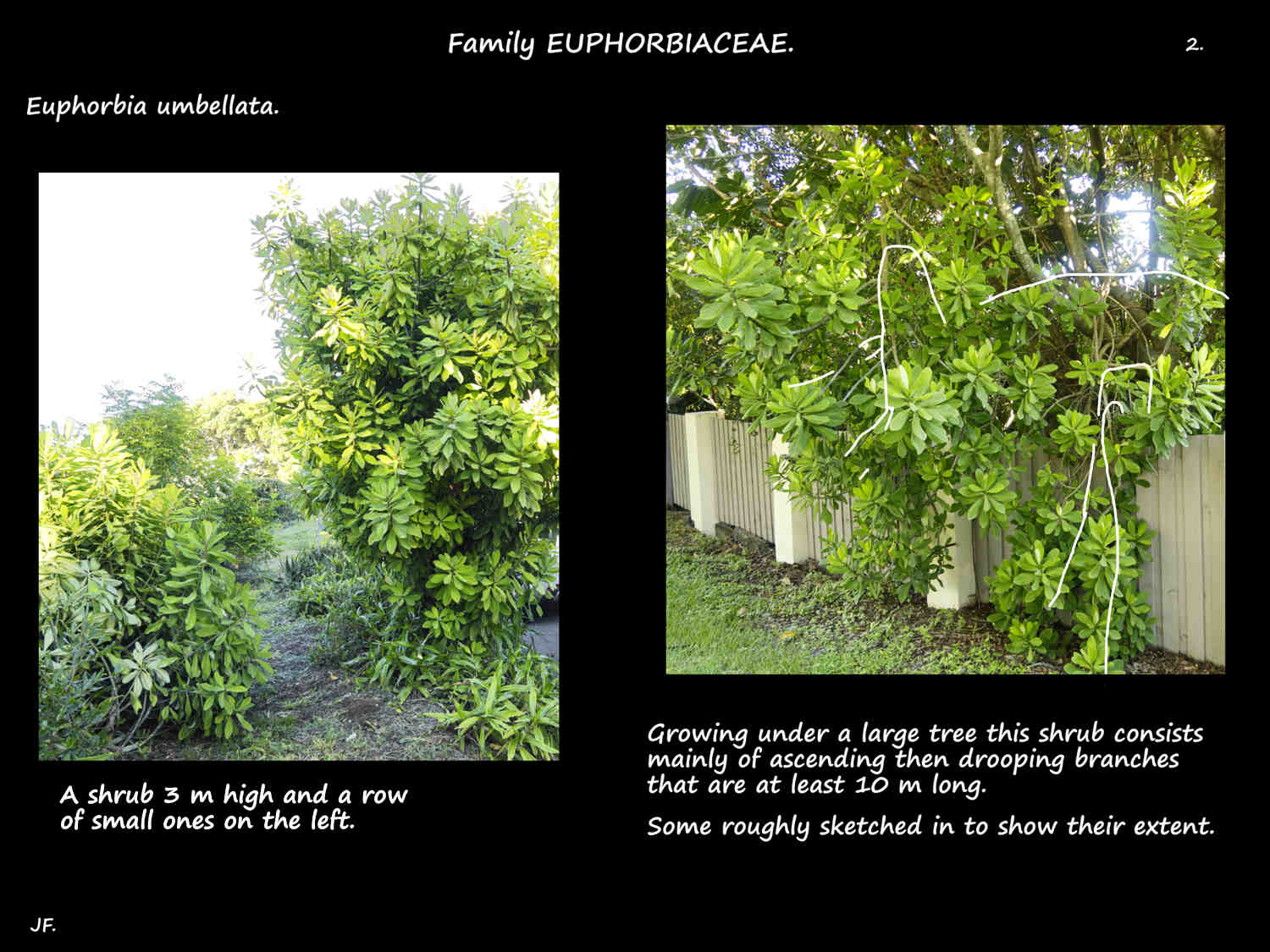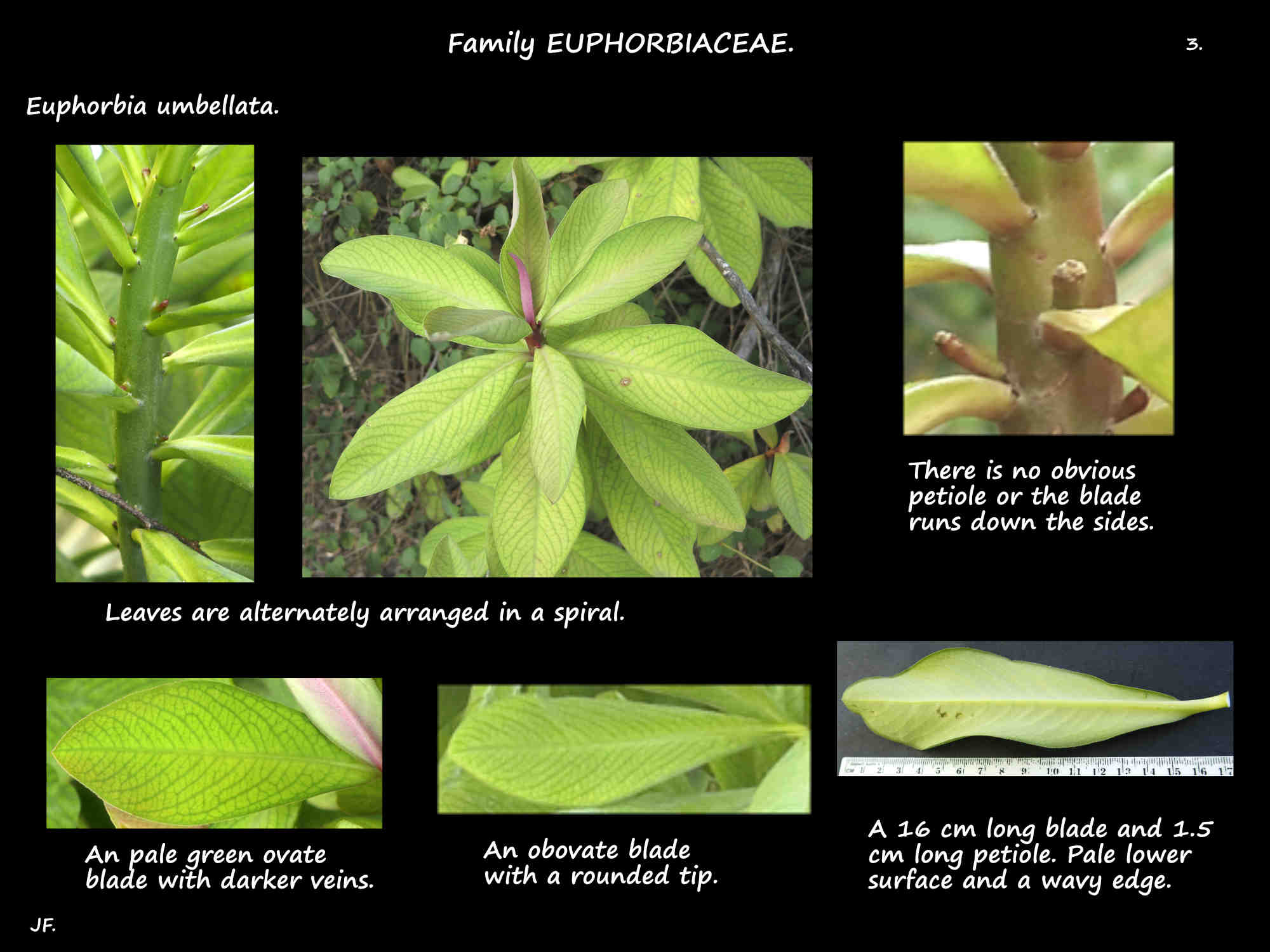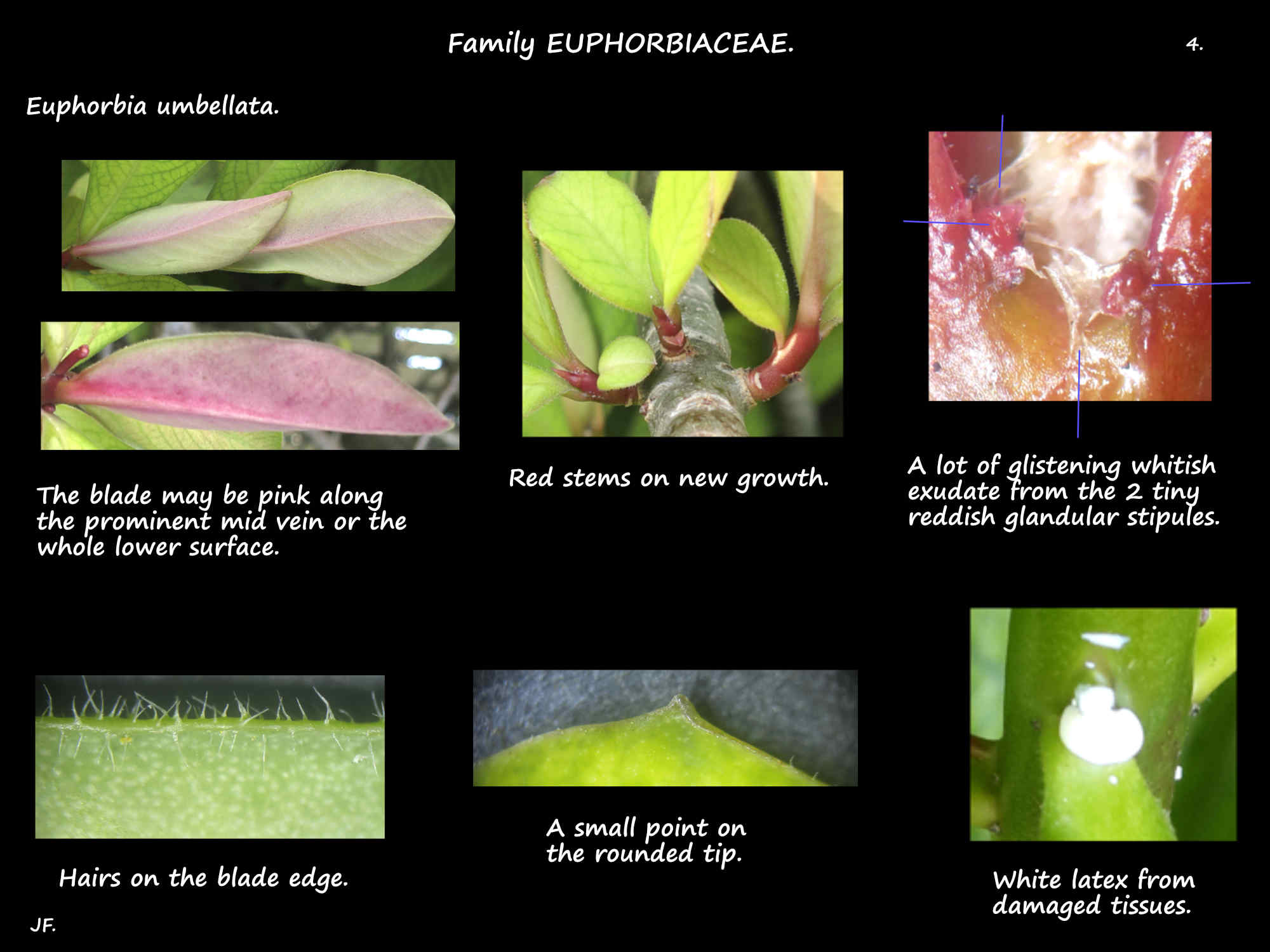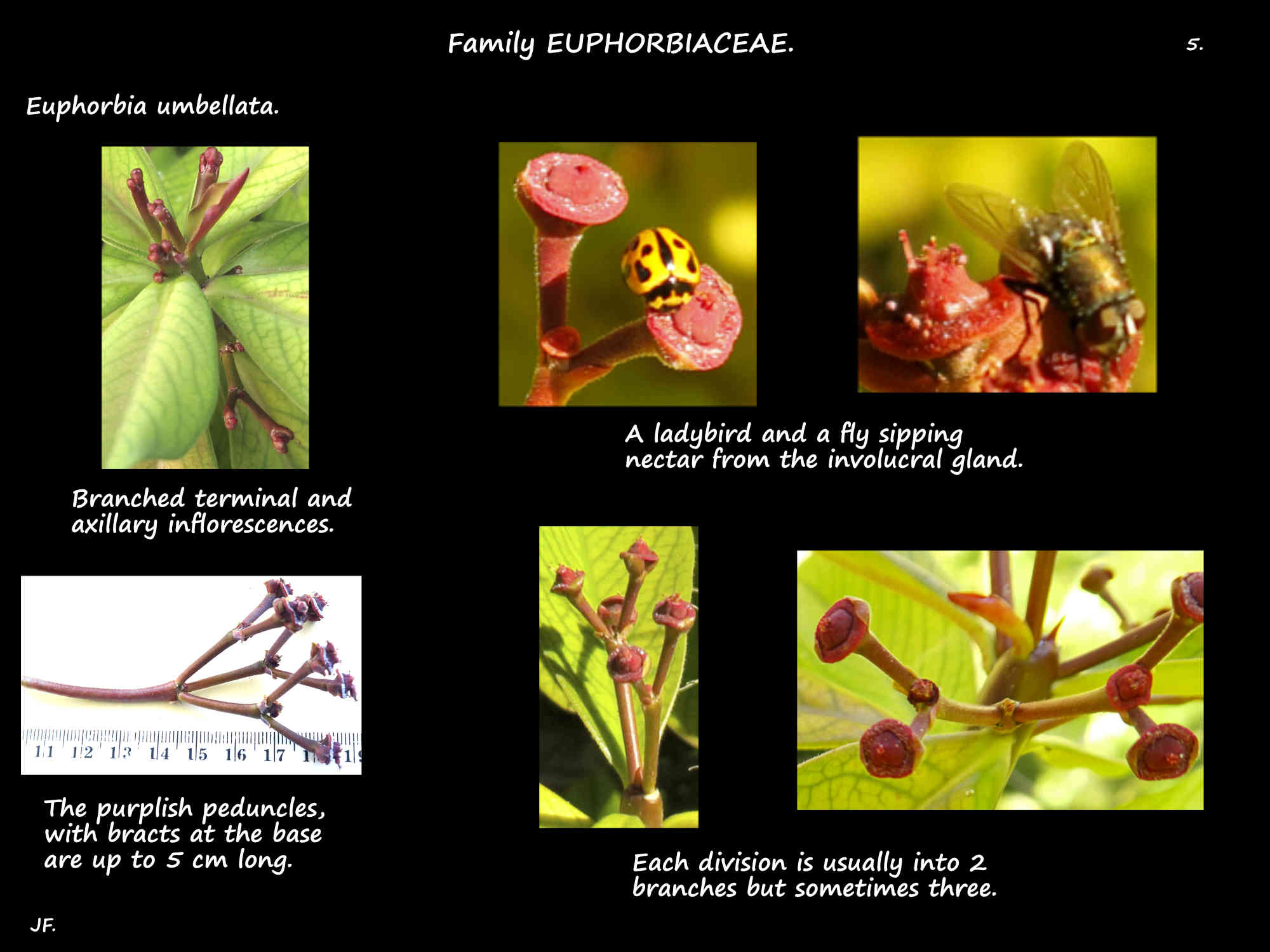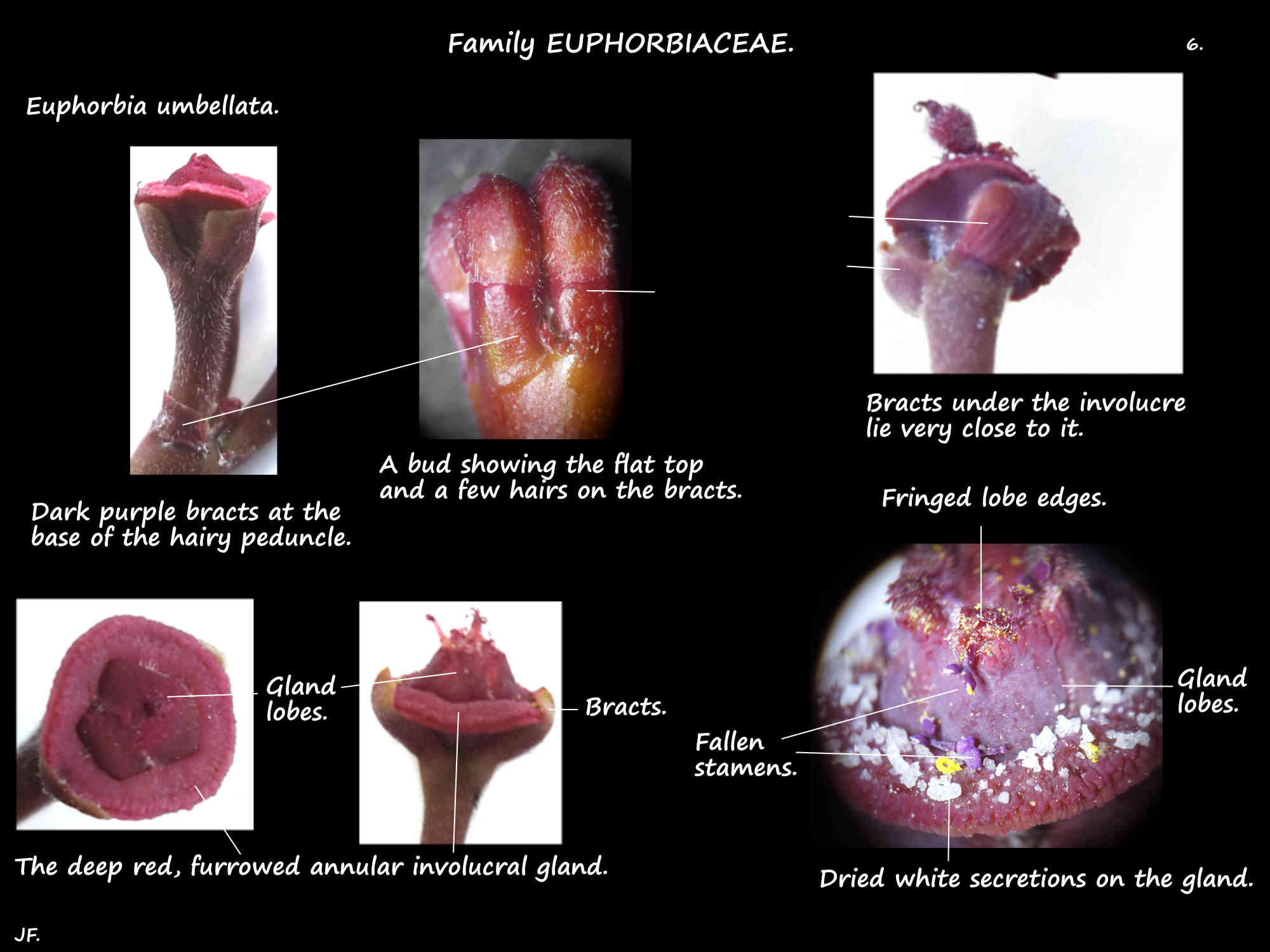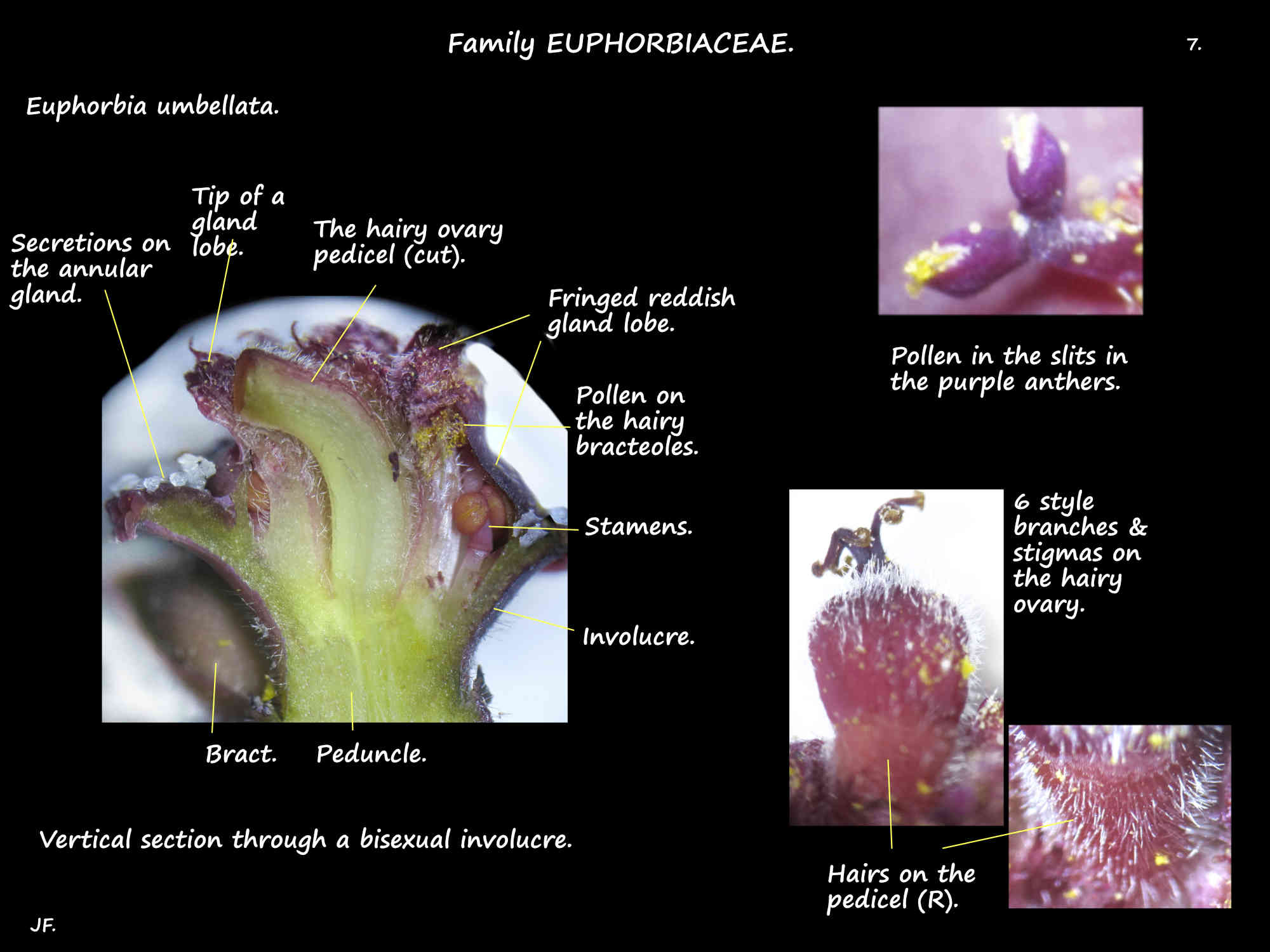Euphorbia umbellata.
Synadenium grantii was one of about 15 species in the Euphorbiaceae family that differed from the
others by having the involucral glands in a continuous ring rather than 5 separate glands.
With recent scientific studies it has now been put in the Euphorbia genus.
The African Milk Bush is fairly common in Brisbane.
They are evergreen, semi-succulent plants that exude large amounts of milky latex when damaged.
Grown as a dense shrub they are around 5 m high and as a small tree they can be 10 m high and wide.
The pale greyish main trunk can be 15 cm across with numerous erect branches rising near the base.
Young branches are cylindrical, green to purplish and they have no hairs.
Older stems are a pale grey and the leaf scars are prominent.
The alternate leaves have no petiole or one around 1 cm long with the blade running down the sides.
The tiny stipules at the base are modified into reddish-brown glands that soon fall off.
The slightly fleshy narrowly ovate, obovate or oblanceolate blades are up to 20 cm long and 6 cm wide.
They have a rounded tip that may have a small point and there is a wedge-shaped base.
The edge may be slightly wavy or rolled under and there are occasionally a few fine teeth near the tip.
There are small hairs on the edges and near the base.
The blade is green with the lower surface being paler or tinted red especially on the prominent midrib.
The reticulated pinnate veins are a darker green.
The terminal and axillary inflorescences are branched clusters (cymes) of a few cyathia on peduncles up to 5 cm long.
At each division the hairy purple peduncles typically branch into two.
Each branch holds a cyathium of an involucre containing the flowers.
The cyathia have 2 bracts immediately below them that lie closely against the involucre.
The 3 or 4 mm hairy and dark greenish-red bracts have a flat top that may have small teeth.
The saucer-shaped involucre is around 6 mm across and 2 to 3 mm deep.
It is a deep reddish-brown and has hairs at the base.
On the rim is a 1 mm wide, dark red annular gland that overhangs the edges of the involucre.
Attached below the inner side of the gland are 5 wide red lobes with a round or squarish top.
Their edges are fringed and there are tiny hairs at the base.
An involucre can have bisexual or male only flowers and each cyme has only one type.
A bisexual or male cyathium has up to 30 staminate flowers with no pedicels.
Stamens are around 4 mm long with a roundish purple anther that opens via a slit.
Around the base of each filament is a ring of linear bracteoles with densely hairy edges.
Bisexual flowers have a single pistillate flower inside the stamens.
The superior ovary may have a narrow rim of perianth below it.
The hairy ovary has 3 locules each with a single ovule.
The 3 green, 2 mm long styles are fused at the base and divide into 2 at the top.
The 6 stigmas curve outwards.
As the fertilised ovules develop the pedicel lengthens and the ovary bends down sideways.
The fruit are 3-lobed red capsules with short hairs.
The ovoid 2 mm long seeds have very small tubercles.
J.F.
